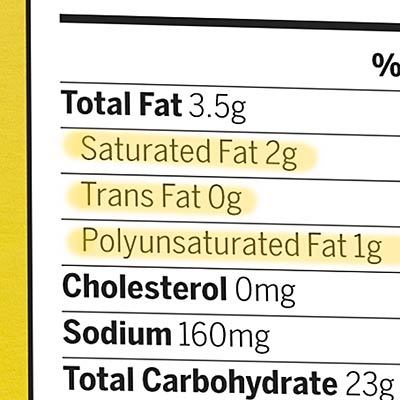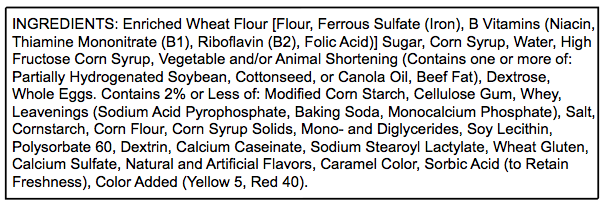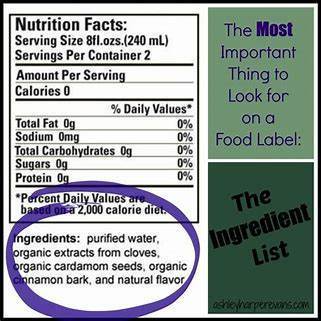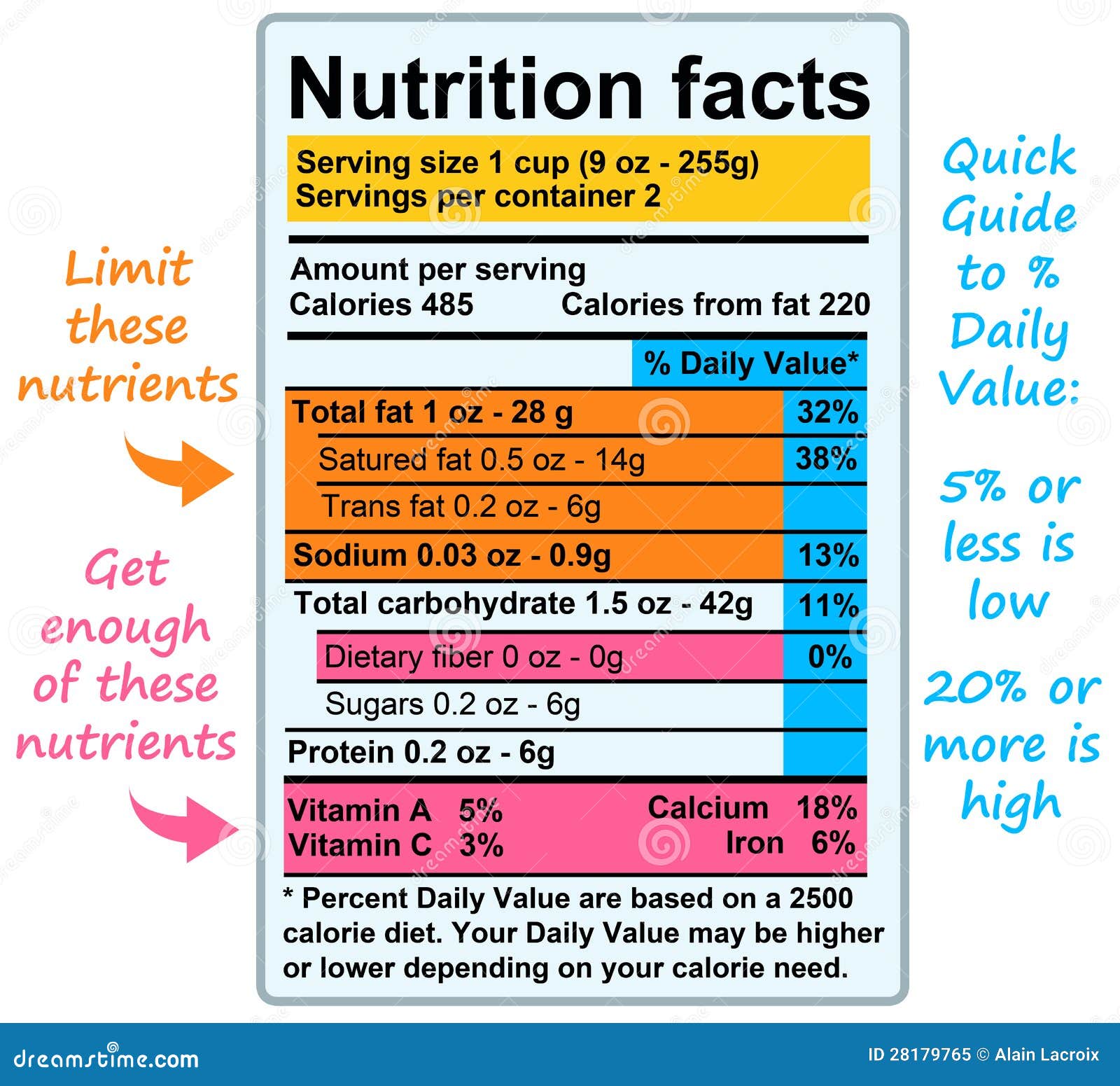43 how to read fats on food labels
safefood | How to read food labels How do I know if a food is low, medium or high in fat, saturated fat, sugar and salt? Some labels use colour coding to show at a glance if a food is high, medium or low in fat, saturated fat, sugar and salt. Low (green) - the best choice Medium (amber) - okay most of the time High (red) - only choose occasionally. If the label isn't colour ... How to Read Nutrition Labels: Fat Content, Carbs & What To Look For Nutrition labels are required to include total fat, saturated fat, and trans fat. The total amount of fat in the diet is a percentage of your calorie needs. The recommendation for the typical American diet is around 30%. For someone taking in 2,000 calories, this would mean around 70 grams of total fat per day.
Food Label Detective: How to Spot the Good Fats - The Dr. Oz Show On the Food Label Both saturated fat and trans fat amounts are clearly listed underneath "Total Fat," although some foods labeled trans fat-free may still contain small amounts (up to 0.5 grams) of trans fat. That's why it's important to also check a food's ingredient list.

How to read fats on food labels
Learning To Read Labels :: Diabetes Education Online On a nutrition food label, subtract the fiber from the total carbohydrate amount. When you read food labels, the grams of sugar are already included in the total carbohydrate amount, so you do not need to count this sugar amount separately. The grams of sugar listed include both natural sugars, from fruit or milk, and added sugars. Fat Content on Food Labels - Reading Between the Lines The Mayo Foundation continued, "Still, you may be able to tell if a product contains trans fat, even if it's not directly listed on the food label. Look for the words ' hydrogenated ' or 'partially hydrogenated' in the list of ingredients. These terms indicate that the product contains trans fat. How to read food labels: MedlinePlus Medical Encyclopedia If a food has these fats, the amount will be listed on the label under total fat. They are measured in grams. Look for foods that have no trans fats or are low in them (1 gram or less). Sodium is the main ingredient of salt. This number is important for people who are trying to get less salt in their diet.
How to read fats on food labels. How to Understand and Use the Nutrition Facts Label | FDA Nutrients to get less of: Saturated Fat, Sodium, and Added Sugars. Saturated fat, sodium, and added sugars are nutrients listed on the label that may be associated with adverse health effects - and... Labelling requirements for fats and oils - Food labels - Canadian Food … Certain fats and oils, when declared in the list of ingredients, are required to use specific mandatory common names. See Mandatory common names for ingredients and components for more information. There are other fats and oils, when declared in the list of ingredients, that may optionally be listed using collective or class names. How to read nutrition labels | safefood Some labels use colour coding to show at a glance if a food is high, medium or low in fat, saturated fat, sugar and salt. Low (green) - the best choice. Medium (amber) - okay most of the time. High (red) - only choose occasionally. If the label isn't colour coded, use our label decoder as a guide. Understanding Ingredients on Food Labels | American Heart ... Mar 06, 2017 · There are many terms used for sugar on food labels. You might see sugar listed as the fourth ingredient in a product and think it’s not so bad. But sugar can also be listed as high-fructose corn syrup or corn syrup, agave nectar, barley malt syrup or dehydrated cane juice, to name just a few. Read more about sugar and sweeteners.
Food labels - NHS Front-of-pack labels usually give a quick guide to: energy fat content saturated fat content sugars content salt content These labels provide information on the number of grams of fat, saturated fat, sugars and salt, and the amount of energy (in kJ and kcal) in a serving or portion of the food. How to Read Fats & Oils Food Labels A Note on Ingredient Lists Fats and oils can come from many sources, like animal fats, fish, seeds, plants, and nuts. Reading the ingredient lists on products will reveal the source of the fat. For oils and fats ingredient lists, fats and oils are referred to by their common names (e.g., "beef fat," "cottonseed oil"). How to Read a Dog Food Label - American Kennel Club Nov 30, 2020 · All pet food labels follow roughly the same format: Product and brand name or unique identifier. Quantity in terms of product weight, liquid measure, or count, depending on the formulation of the ... How to Read the Nutrition Facts Label on Packaged Foods Follow the guidelines your doctor gave you about how much and which types of fat are OK for you. A registered dietitian can give you more information and ideas for meals and snacks that fit those...
Fats | Nutrition.gov Learn what dietary fats do for the body and how much fat is recommended per day. Look up how much fat is in popular foods, like avocados and eggs. Skip to main content An official website of the United States government. Here's how you know. Official websites use .gov A .gov website belongs to an official government organization in the United States. Secure .gov websites use … PDF How to Read the Food Label - Risk Services The percentages help you find foods high in good nutrients and low in nutrients you want to avoid. If the value is 20% or more, it's considered high. If it's 5% or less, it's low. Total fat. This tells you how much fat is in one serving. A . low-fat food has 3 grams (g) or less of total fat per serving. Saturated fat and trans fat 10 Tips for Reading Food Labels: What to Look For On the right side of the label, you'll find percentages listed next to the other serving information. These numbers tell you what percentage of your "daily value" of that nutrient is contained in each serving. Anything pushing 20%-30% is most likely not good for you, unless it's a vitamin or nutrient that you don't get a lot of. How to Read Nutrition Facts Labels the Right Way - GoodRx Nutrition Facts labels are required to list the total fat, saturated fat, and trans fats on packaged food products. It's important to choose foods with the right kinds of fats. Here are the differences between the fats you'll see on the label. Bad fats Saturated and trans fats are the less healthy types of fats.
Interpreting Total Fat and Types of Fat on Food Labels - Nina Cherie ... Determining the type of fat can help you decide whether or not a food is rich in 'healthy' and/or 'unhealthy' fats. Trans fats and, in some cases saturated fats, are considered "unhealthy" or "bad" while monounsaturated and polyunsaturated (omega-3) fats are generally healthier alternatives or "good" fats.
3 Ways to Read Nutrition Facts on Food Labels - wikiHow Every number listed beneath "total fat" is calculated based on the amount contained in a single serving. So if the saturated fat on a label is listed at 6 grams but the number of servings is listed as 3, it means that there are a total of 18 grams of saturated fat in the container. [1]
How To Read Nutrition Labels When reading a nutrition label, the first place you'll want to check out is at the top section. Here is where you'll find important information including: 1. Serving size Check for how many servings are in the package. This amount is typically provided in units, such as cups or pieces.
Your Nutrition Label Cheat Sheet—How to Read Labels the Right Way This section of the nutrition label shows you key nutrients that impact your health. This is where you can use the label to support your personal dietary needs—look for foods that contain more of the nutrients you want to get more of and less of the nutrients you may want to limit. The label also includes both Added Sugars and Total Sugars.
How To Read Food and Beverage Labels | National Institute on … 24.02.2022 · Understanding what’s in the foods and beverages we may consume can help us make healthier decisions.In many countries, including the United States, packaged foods and drinks — the types that come in cans, boxes, bottles, jars, and bags — include nutrition and ingredient information on their labels.

Boost Your Metabolism: The Trouble with Food Labels: Why “Low Fat” Foods Aren't the Answer to ...
Food Labels (for Teens) - Nemours KidsHealth Food labels provide more than just nutrition facts. They also tell you what's in a packaged food (i.e., the ingredients). People with food allergies need to check ingredient lists to avoid foods that can cause an allergic reaction. Some food labels also state which country the food came from, whether the food is organic, and certain health claims.
Food Labels: Fat & Cholesterol | Home & Garden Information Center The Nutrition Facts label shows you how much fat is in a product, even if the fat is hidden as an ingredient. The serving size and the nutrients listed on this label are consistent, which makes it easy to compare similar products without any calculations. % Daily Values (% DVs) are listed in a column on the "Nutrition Facts" label.
How to read food labels | healthdirect Sugar: Sugar is a type of carbohydrate. It is better to choose healthier carbohydrates and to limit foods that are high in added sugars. Fibre: High fibre foods such as wholegrain bread and cereals improve digestion and help you to feel full. Sodium: This tells you how much salt the product contains. Eating too much salt is linked to high blood pressure and can lead to heart disease, …
How To Read Food and Beverage Labels | National Institute on ... Feb 24, 2022 · The % DV information is not calculated with the unique needs of older adults in mind. Read the nutrition label as a whole to determine how a particular food or drink fits into your healthy eating pattern. Is lower % DV always healthier? If a food has 5% DV or less of a nutrient per serving, it is considered low in that nutrient. If it has 20% ...
Understanding Ingredients on Food Labels - American Heart … 06.03.2017 · There are many terms used for sugar on food labels. You might see sugar listed as the fourth ingredient in a product and think it’s not so bad. But sugar can also be listed as high-fructose corn syrup or corn syrup, agave nectar, barley malt syrup or dehydrated cane juice, to name just a few. Read more about sugar and sweeteners.
Food Labels (for Teens) - Nemours KidsHealth Food labels provide more than just nutrition facts. They also tell you what's in a packaged food (i.e., the ingredients). People with food allergies need to check ingredient lists to avoid foods that can cause an allergic reaction. Some food labels also state which country the food came from, whether the food is organic, and certain health claims.
Understanding food labels | Diabetes UK If you buy pre-packed foods and drinks, understanding the information on food labels can help you make healthier choices that will help you and your family to eat well. Labels on foods and drinks give essential information, such as: the ingredients; the nutrients (such as fats, calories, fibre) how much they contribute to what an average adult needs each day. On the back. …
Easy Guide to Understanding Food Labels When You Have High ... - MyDoc 1. Choose products low in saturated fat, trans fat and cholesterol. When shopping for food, use the nutrition information panel to compare and choose products with lower fat, saturated fat and cholesterol content. Saturated fat is a type of fat that raises your total and LDL cholesterol and risk of heart disease, so intake should be limited.
How to Read a Dog Food Label - American Kennel Club 30.11.2020 · We all want the best for our dogs, including nutrition. And anyone who has shopped for dog food knows, there are virtually unlimited options: Hundreds of brands with innumerable ingredients; wet ...
Types of Fat in Food: Understanding the Different Dietary Fats Read labels carefully before eating packaged or processed foods. The bottom line: To keep your heart -- and the rest of you -- healthy, get most of your fats from unsaturated sources.
Understanding Food Nutrition Labels | American Heart Association 1 - Start with the serving information at the top. This will tell you the size of a single serving and the total number of servings per container (package). 2 - Next, check total calories per serving and container. Pay attention to the calories per serving and how many calories you're really consuming if you eat the whole package.












Post a Comment for "43 how to read fats on food labels"